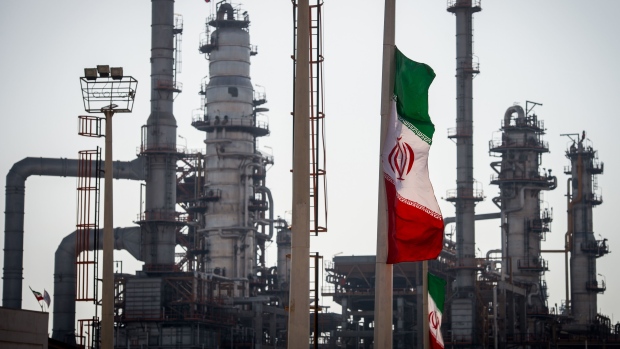Oct 8, 2021
Large Methane Clouds Spotted Near Gas Pipelines in Iran
, Bloomberg News

(Bloomberg) -- Satellites spotted several large clouds of methane near fossil fuel infrastructure in Iran, which is one of the largest producers of natural gas and responsible for the world’s third-most emissions of the superpotent greenhouse gas from oil and gas activities.
The methane plumes were identified by geoanalytics firm Kayrros SAS using European Space Agency data. The largest leak occurred on Sept. 5, in the southwest of the country near the border with Iraq. The rate of release was about 95 tons per hour, which has approximately the same climate-warming impact as 4,700 cars in the U.K. running for one year. Learn more about the planet-warming power of methane:
There were two other leaks in September in the same area, one on Sept. 17 that emitted 34 tons per hour and another on Sept. 24 that released 36 tons per hour. Additionally, on Sep. 12, just south of Tehran, a leak released about 54 tons of methane per hour.All the clouds were seen near gas pipelines owned by the National Iranian Gas Company. The leaks in the south were also near an oilfield, but a spokesperson for Kayrros said pipelines were the most likely source as those leaks happen often during routine maintenance.
Representatives for the National Iranian Gas Company didn’t reply to requests for comment.
Methane, which is the major component of natural gas, has more than 80 times the warming impact of carbon dioxide over the short term. Scientists say that reducing methane emissions is one of the quickest ways to slow down global warming. Those from oil and gas infrastructure, in particular, are the lowest hanging fruits.
Satellite monitoring has been helping expose leaks of the super-potent greenhouse gas from fossil-fuel infrastructure. That has forced companies to disclosed previously unreported leaks and caused regulators to open investigations.
©2021 Bloomberg L.P.


